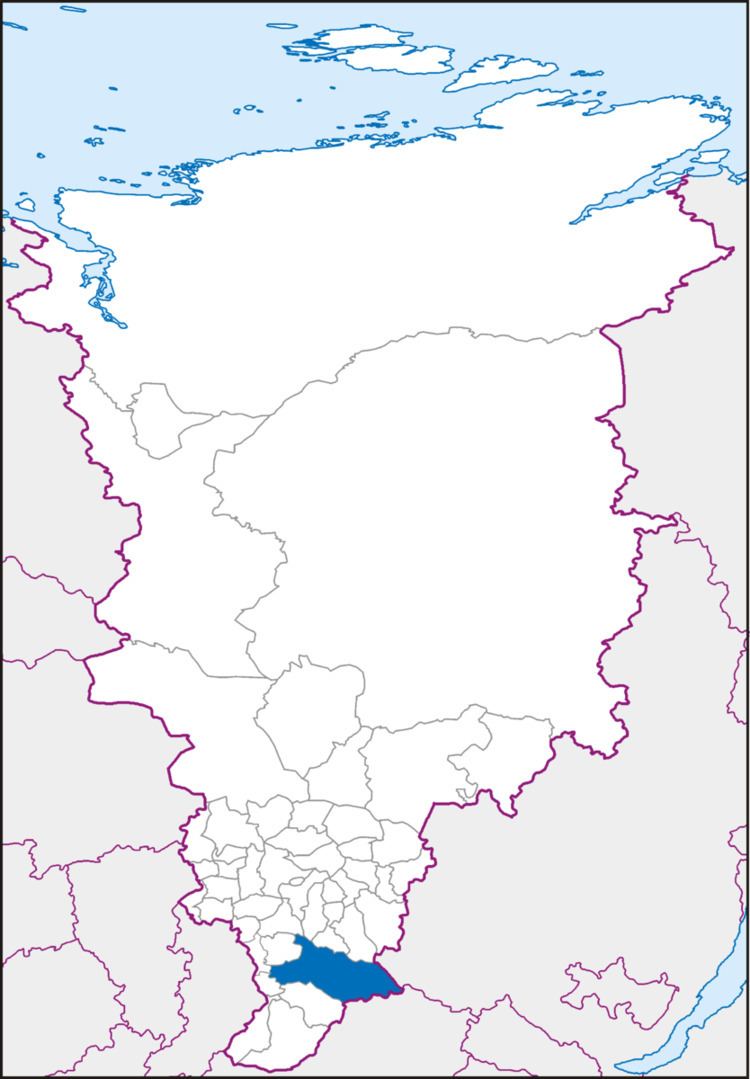Coat of arms Flag Urban-type settlements 4 Founded 4 April 1924 | District towns 1 Area 24,073 km² | |
 | ||
Administrative center urban-type settlement of Kuragino | ||
Kuraginsky District (Russian: Кура́гинский райо́н) is an administrative and municipal district (raion), one of the forty-three in Krasnoyarsk Krai, Russia. It is located in the southeast of the krai and borders with Balakhtinsky, Mansky, Partizansky, and Sayansky Districts in the north, Irkutsk Oblast in the northeast, the Tuva Republic in the southeast, Karatuzsky District in the north, Minusinsky District in the southwest, Krasnoturansky District in the west, and with Idrinsky Districts in the southeast. The area of the district is 24,073 square kilometers (9,295 sq mi). Its administrative center is the urban locality (an urban-type settlement) of Kuragino. Population: 47,690 (2010 Census); 51,873 (2002 Census); 54,337 (1989 Census). The population of Kuragino accounts for 28.8% of the district's total population.
Contents
- Map of Kuraginsky District Krasnoyarsk Krai Russia
- Geography
- History
- Government
- Economy
- Transportation
- Culture
- Education
- Public health services
- References
Map of Kuraginsky District, Krasnoyarsk Krai, Russia
Geography
Kuraginsky District is the largest in terms of area in the south of Krasnoyarsk Krai. It stretches for 400 kilometers (250 mi) from west to east.
Climate in the district is strongly continental. Tourist attractions include the Kinzelyuk Waterfall, one of the highest in Russia.
History
The district was founded on April 4, 1924.
Government
As of 2013, the Head of the district and the Chairman of the District Council is Yevgeny D. Dmitriyev.
Economy
The district is a raw-material base for the metallurgical, food-processing, and timber industries.
Transportation
The Abakan-Tayshet railway passes through the district. The total length of the auto roads in the district is 641 kilometers (398 mi), of which 257.9 kilometers (160.3 mi) are hard-surface roads.
Culture
There are thirty-nine clubs, two museums, thirty-six public libraries (with the total book stock numbering ~367,000 volumes), and three music schools.
Education
Thirty-six educational facilities are located in the district.
Public health services
There is one hospitals, as well as four clinics. There are on average 1.23 medical workers per 1,000 people.
